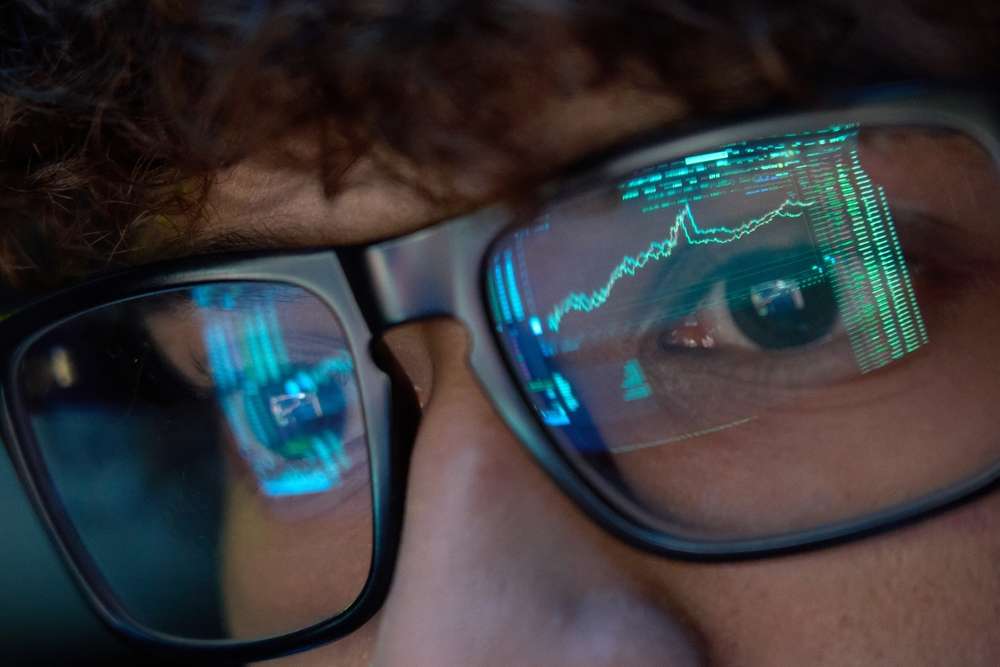
Understanding Self-Directed Learning
Self-directed learning is an instructional strategy where the students take full control of their education, steering through their learning path independently. This approach essentially transforms the student from a passive recipient of knowledge into an active participant in the learning process. While it sounds simple, gaining competence in self-directed learning takes a fair amount of understanding and dedication.
At the core of self-directed learning lies autonomy and independence. It derives from the understanding that learning is not confined to the physical or temporal space of a classroom, rather it is an ongoing process that requires one to be actively involved. In self-directed learning, you select what you want to learn, figure out how to learn it, and assess your own progress. While teachers or learning resources can guide, ultimately it’s your responsibility to manage and assess your learning.
Self-directed learners are naturally curious, disciplined, and constantly seeking opportunities to grow and enhance their skillsets. They define their own learning goals, select resources, determine their progress, and adapt their learning strategies as per their needs. Moreover, they’re not afraid to make mistakes, instead, they view them as opportunities to learn and grow.
It’s important to understand that self-directed learning is not about isolating oneself but about taking charge of one’s learning experience in an informed and strategic way. You can learn from others, follow a structured curriculum if needed, and yet be a self-directed learner by engaging actively with the learning materials rather than passively consuming them.
In the current digital age, the importance of self-directed learning has grown exponentially. With the world of knowledge just a click away, individuals with the ability to direct their own learning journey are in a better position to adapt, evolve, and excel.
However, it’s critical not to perceive self-directed learning as an easy escape from formal education. It’s not about shunning guidance or about learning in chaos. On the contrary, effective self-directed learning is a structured process that involves self-assessment, goal setting, strategic planning, and regular evaluation.
Remember, the ability to engage in self-directed learning is not an inborn talent, but a skill that can be developed and honed. It thrives in an environment conducive to exploration, questioning, and thinking. With an understanding of its fundamental principles and consistent practice, self-directed learning can unlock new dimensions in the quest for knowledge.

Characteristics of Effective Self-Directed Learners
Effective self-directed learners possess several key characteristics, most importantly, they have innate curiosity about the world around them. This curiosity often metamorphoses into motivation for knowledge acquisition and exploration. Successful self-directed learners are not deterred by the challenging process of learning something new. Instead, they embrace it and see it as an opportunity for development and growth.
One main characteristic of effective self-directed learners is to set meaningful and achievable goals. They are able to articulate what they want to achieve and then outline the steps required to reach that goal. These goals give them a clear sense of direction and something to strive towards. It also helps them monitor their progress and adjust their approach when necessary.
They also possess intrinsic motivation, an attribute which compels them to learn for their enjoyment rather than external rewards or outcomes. They find the process of learning satisfying in itself, which enables them to sustain their interest and preserve even when learning becomes challenging.
Effective learners are also able to channelize their emotions positively and manage stress well. They can keep unpleasant feelings like anxiety, frustration, or distress that normally accompany the learning process under control. They understand that these feelings are part of the journey and consider them as ways to their development rather than obstacles.
Another essential trait is the ability to think critically. They constantly evaluate the information they encounter. They question it, analyze it, and try to find connections to their previous knowledge. This approach helps them construct a deeper understanding of the subject matter rather than accumulate isolated facts.
Effective self-directed learners are adaptable and flexible in their learning strategies. They understand that not every strategy works for every learning situation, so they often experiment with various methods and pick the one that works best for them in a given context.
Lastly, they take responsibility for their learning. They don’t rely on others to tell them what to learn or how to learn. Instead, they play an active role in their learning: they identify their learning needs, plan their learning activities, and evaluate their learning outcomes.
These are some of the key characteristics of self-directed learners. While this list does not cover all the traits, they are some of the most common and most important ones. Understanding these characteristics can help individuals to become more effective in their self-directed learning endeavors.

Creating Your Personal Learning Space
Creating a personal learning space is a critical step in enhancing self-directed learning. This space serves as a physical representation of your commitment to self-education, and it should be carefully designed to promote concentration and stimulate learning.
Firstly, your learning space should be free from distractions. Our minds are naturally inclined to jump from one thing to another, so any form of disruption can greatly affect productivity. This means suitable sound management, either through a quiet location or noise-cancelling headphones, and a minimalist design to limit visual distractions.
Furniture selection ought to promote comfort but not too much as to induce sleepiness. The chair and table should be ergonomically suited to your physical needs to avoid discomfort and potential health issues from prolonged use. At the same time, an excessively cozy space might make it more difficult to concentrate.
The nature of lighting in your space is yet another vital aspect to consider. Natural light is always the best option, but make sure to have alternative light sources for studying in the late hours. It’s important to remember that soft yellow or white light is easier on the eyes compared to stark white or bluish light.
Your personal learning space should also cater to the storage and organization of your studying materials. Shelves, desk organizers, and filing systems could help in maintaining a clean and orderly working environment, which is conducive to productivity.
Digital organization is equally important for those relying mostly on online resources. Consider using digital tools that enable you to manage your e-books, online articles, and other digital resources effectively.
Personalize your space with inspirational items that stimulate your morale. This could range from motivational quotes, a favorite artwork, a picture of your loved ones, or even a vision board depicting your goals.
In addition, incorporating a spot for breaks or relaxation is essential in your learning space to ensure balance. This could be a comfortable chair or a yoga mat where you can rejuvenate and prepare your mind for the next round of study.
Last but not least, maintaining the cleanliness and neatness of your learning space should never be overlooked. A tidy space promotes a sense of calmness and readiness, energizing you to immerse yourself in your self-guided learning journey.
By curating your personal learning space with intentionality and mindfulness, you create an environment that’s conducive to effective self-directed learning, fostering your growth and development. Design this space with purpose, making it a sanctuary of enlightenment, motivation, and wisdom that inspires your continued journey of learning.

The Role of Goal Setting in Self-Directed Learning
In the journey of self-directed learning, goal setting plays a pivotal role. It is not just about acquiring new knowledge and skills for the sheer joy of learning. It’s also about having clear objectives to guide your learning journey.
Setting goals for yourself helps to give your learning direction and can serve as a strong motivator to keep you on track. Unlike in traditional classroom environments, where goals are often set for you by teachers or a curriculum, in self-directed learning, you have the freedom and responsibility to set your own learning goals.
Begin by identifying what exactly it is you hope to achieve through self-directed learning. This could involve acquiring a new skill, deepening your understanding of a particular topic, or even personal growth and self-improvement. Make sure that your goals are specific, measurable, achievable, relevant, and time-bound – often referred to as SMART goals.
Specific goals are clear and well-defined, not vague or broad, which helps to provide a straightforward path for your learning. Measurable goals can be quantitively assessed to ensure that you are making progress. Achievable goals mean that they are realistic and in your power to accomplish. Relevant goals are suitable for your long-term goals or chosen career. Lastly, time-bound goals have a time limit, providing a sense of urgency to motivate you towards reaching them.
Your goals should also be dynamic. Allow yourself the flexibility to modify and adjust them as you progress in your learning and as your knowledge and interests evolve. After all, the emphasis is on ‘self’ in self-directed learning. You have the autonomy over what you study, how you study it, and at what pace.
Ensure to break down larger or long-term goals into smaller, manageable tasks or milestones. This practice will prevent you from getting overwhelmed by the magnitude of your goal and will provide an easy way to track your progress. Celebrating these small wins along the way can also prove to be a great morale booster.
In tandem with setting learning goals, it’s important to also determine success metrics or clear indicators of achievement. How will you gauge when a goal has been thoroughly attained? Concluding whether or not a goal has been reached can sometimes be the tricky part. Defining success metrics upfront can assist you in objectively assessing your progress.
Finally, it’s important to remember that the goal is not the end-all-be-all of self-directed learning. The process of learning itself, with all its trials, tribulations, and triumphs, is equally important. You are shaping your own learning path, and along the way, you’ll learn more about yourself as a learner. So, remember to savour the journey, and celebrate your achievements, no matter how small they may seem.

Techniques to Maintain Focus and Motivation
Maintaining focus and motivation is paramount when engaging in self-directed learning. The journey of educating one’s self can sometimes feel lonely and challenging. However, an array of techniques can be used to enhance concentration and keep the learner motivated.
Firstly, it is essential to develop a routine that you can stick to consistently. Have a specific time and place for your learning activities. Ensuring that your learning environment is quiet and free from distractions can significantly improve your focus. This doesn’t mean that the environment has to be sterile and devoid of character. Personalizing your learning space can also keep you motivated to return.
A very potent technique for maintaining focus is the Pomodoro technique, where you work for a specified amount of time, say 25 minutes, then take a short break of 5 minutes. This method helps prevent burn out and keeps your mind fresh, thereby maintaining focus over longer periods.
Goal setting, as discussed earlier, has a significant impact on motivation. When setting goals as a self-directed learner, you should try to embrace SMART goals – that is, goals that are Specific, Measurable, Achievable, Relevant, and Time-bound. Breaking down your learning objectives into smaller, manageable tasks can help to maintain motivation as it allows you to chart progress, which acts as a positive reinforcement, knowing that you are making headway in your learning journey.
Having a strong “why” or purpose for your learning can also help maintain motivation. Remembering why you embarked on this learning journey and what you hope to achieve at the end, whether it’s career advancement, personal growth, or a specific skill, can keep you driven, especially during difficult times.
Visualization is another powerful technique for holding your motivation levels high. Picture yourself using and benefiting from the knowledge or skill you’re learning. This mental vision can act as a beacon when motivation levels are low.
Incorporation of breaks in your learning routine can also be instrumental in maintaining focus and preventing burn-out. Engage in activities you enjoy during breaks – this might be as simple as listening to music, taking a walk, or doing a quick workout. You aim to return to your learning feeling refreshed and revitalized.
For a more tech-savvy approach to maintain focus, apps like Forest and Focus@Will can help. Forest allows you to “plant a tree” which grows when you stop using your phone, and Focus@Will offers background music designed to improve concentration.
Lastly, remind yourself constantly that learning is a marathon, not a sprint. It’s important to pace yourself and be patient. Learning is both a journey and a destination, and keeping this in mind will aid in maintaining motivation.
By deploying the techniques outlined above, you can increase your chances of becoming a successful self-directed learner who can focus on tasks at hand and stay motivated for the learning journey ahead.

Incorporating Feedback and Reflection in Self-Directed Learning
Feedback and reflection are pillars of self-directed learning. They provide insight into your progress, help you revise your strategies, and fuel your motivation for further learning. However, when you are your own teacher, gathering meaningful feedback and making time for thoughtful reflection can be a challenge. Below are a few strategies to help you incorporate these elements effectively in your self-directed learning process.
In the context of self-directed learning, feedback could come from a variety of sources, including digital learning tools, mentors, peers, or even self-assessment. The digital age has provided us with numerous learning platforms that offer instant feedback. These could be educational apps, online courses, or question-answer forums like Quora. Make good use of these resources. Proactively seek feedback by asking questions, participating in discussions, or completing quizzes.
Identifying a mentor in your field of interest can be highly beneficial. A mentor can provide professional guidance, constructive feedback, and can push you towards achieving your learning goals. If a mentor is not accessible, consider forming a study group with peers pursuing similar interests. Sharing knowledge, asking questions, and getting feedback from other learners can be immensely beneficial for intellectual growth.
Self-assessment is another imperative tool. It involves critically reviewing your own work, asking yourself targeted questions, and being honest about your understanding and capabilities. It can be as simple as noting down key takeaways after each learning session, conducting quizzes for yourself, or trying to teach the newly acquired concept to someone else. If you can explain it convincively to someone else, it signifies a solid understanding on your part.
Reflection, on the other hand, is a more deep-seated process. It involves contemplating not just ‘what’ you have learned, but ‘how’ you have learned. It is about understanding your learning styles, preferences, and impediments. The simplest way to start reflecting is by maintaining a learning journal, where you document not just your progress, but also your thoughts and observations about the learning process. Try to answer questions like ‘What strategies are working for me and why?’, ‘What difficulty did I face in understanding this concept?’, or ‘How can I use this knowledge in real-life scenarios?’.
Feedback tells you ‘where’ you are in your learning journey, and reflection helps you understand ‘how’ to navigate it better. Both are continual processes and should be incorporated regularly in your learning schedule. Remember, developing a learning mindset is the key to successful self-directed learning, and feedback and reflection are the vital ingredients that foster it.
Utilizing Technology Tools to Enhance Self-Directed Learning
In today’s digitized world, technology tools play a pivotal role in enhancing self-directed learning. They augment learning experiences by offering a myriad of resources, tools, and opportunities for skills improvement.
One of the most valuable technology tools for self-learning is the internet. Its capabilities are vast, from watching educational videos on platforms like YouTube or Khan Academy, to enrolling in specialized online courses from significant institutions across the globe on platforms like Coursera or EdX. Utilizing these resources not only provides access to a wide array of information but also allows learning at one’s own pace and convenience.
E-books and online libraries are another advantageous tool. Most published books are available virtually, and many libraries have their collections digitally accessible. This makes studying more comfortable, as the need to physically visit a library or bookstore is eliminated. Furthermore, these digital formats often have interactive features such as quick-search functions or built-in dictionaries, enhancing the learning experience.
Mobile learning apps for smartphones and tablets are becoming increasingly prevalent. These apps cater to all kinds of learners, from language apps like Duolingo to coding apps like SoloLearn. They frequently incorporate engaging features, such as gamified learning experiences, which can increase motivation and make learning fun.
Additionally, analytical tools can play a part in self-directed learning. They can give insights into time spent on various activities, progress rates, areas of improvement needed, goal tracking, and more. This conscious understanding of one’s learning patterns and behaviors can be extremely beneficial for self-improvement and the overall learning process.
Virtual reality (VR) and augmented reality (AR) technologies offer immersive experiences that can facilitate learning. For instance, VR can simulate real-life scenarios or provide virtual trips to explore different worlds, historic events, and science phenomena.
Lastly, social networking platforms can contribute to self-directed learning. Joining interest-based communities or forums allows interaction with like-minded individuals, communication of ideas, clarification of doubts, and acquiring new perspectives.
In conclusion, numerous technology tools are present to enhance self-directed learning. By effectively integrating these tools into learning strategies, one can effectively cultivate their personal learning space. It takes savvy navigation and wise selection but, ultimately, these tools can make learning more engaging, manageable, and delightful.


